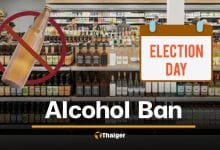Phuket Gardening: Taking the pisonia

PHUKET: THE Phuket Gazette is certainly living up to its status as an international newspaper. Bernard King from Auckland, New Zealand, no less, wonders if I can send him some pisonia seeds.
He writes: “I am a disciple of growing tropical plants in a cool country. I have managed to grow a small mango tree that is bearing fruits. I saw your Gazette article about the lettuce tree. I have tried for a long time to find some seeds… and hope you can help me.”
There are difficulties but not, I hope, insurmountable ones. One is that while pisonia (also known as the lettuce or moonlight tree) is widely distributed, it grows principally in tropical regions of the world. The species (grandis) is particularly common on most of the island groups in the Indian and South Pacific Oceans, even thriving on coral keys and atolls. In the right environment, it can reach eighty feet.
That familiarity with the sea and salt-laden winds, bred into its genes over eons, probably explains why the cultivar alba does well in Phuket, particularly in the Rawai and Nai Harn areas.
The second problem concerns the seeds. In the case of grandis, they are fertile alright, produced inside elongated fruits that come in various sizes. The hairs on the fruits are sticky – hence the name of “bird-lime tree” – and sometimes trap insects and small animals. They even stick to the feathers of birds, and seeds are often dispersed in this way.
But sadly they are a bit of a gamble: they must be planted when fresh; otherwise they will not germinate reliably. Moreover, although alba is the cultivar with the most dramatic leaves, it has fewer flowers and does not always produce seeding fruits.
Bernard has the answer to the first issue; he tells me he possesses a greenhouse where he assures me, pisonia will produce its characteristic yellowish green foliage. Yes, we are still on the topic of yellow shrubs and pisonia alba, along with newer varieties of duranta repens or pigeon berry, which have the showiest golden leaves of any of the plants mentioned in these columns. But the leaves of pisonia are much larger, up to a foot across and have a delicate, almost translucent appearance.
As for the second problem, I shall have to track down a flowering tree in the area, check to see if it has any fruits, and beg a few. Then the seeds will have to be sent, post-haste, to the Antipodes.
Speaking personally, I have had little success with the lettuce tree. It needs some acidity in the soil and good drainage. I tried it in partial shade where it seemed unhappy.
Bear in mind, too, that although it is a relative of the extremely tough and spiny bougainvillea, the grey branches are brittle and the leaves will be at their golden best only in full sun.
Other foliage plants tend to be intermittently yellow. Dracaena fragrans, one of the most popular and hardy of Asian plants, comes in many colors but one, reflexa, has brilliant yellow margins to its leaves. It does especially well in pots and can manage for long periods with little or no watering. Sun is no problem.
Both schefflera and dieffenbachia hybrids, under-storey plants that prefer shady conditions, sometimes sport bold yellow stripes or blotches, and there are forms of Codiaeum (croton) which produce golden foliage. Codiaeum ovafolium, for example, has both yellow and dark green leaves; the narrow leaved “Yellow Johannes Coppinger,” popular here as a container plant, has brilliant golden leaves edged with green.
Tip of the week – Trees
When planning your garden, consider how tall your trees will become. Big fruiting trees such as tamarind, mango, and sataw will quickly outgrow the average plot. So you are better off with trees of a manageable size.
Remember too, that the majority of tropical trees are evergreen, equipped with tough and often attractive glossy leaves that can withstand the heat of the day. They provide deeper pockets of shade for under-storey shrubs, better cover and insulation for the walls of your house.
In temperate climes, most trees are deciduous: they start with a burst of new spring foliage (and often blossom), and then remain in leaf until late in the season when the leaves fall, revealing bare limbs.
In the tropics, fewer trees are seasonally deciduous. They tend to shed some leaves in dry conditions to minimize moisture loss, so they seldom look skeletal.
If you have a question or a garden that you would like featured, you can email the author here.
Keep checking our online Phuket Lifestyle pages or join our Facebook fan page for regular gardening features and tips.
— Patrick Campbell
Latest Thailand News
Follow The Thaiger on Google News:


























